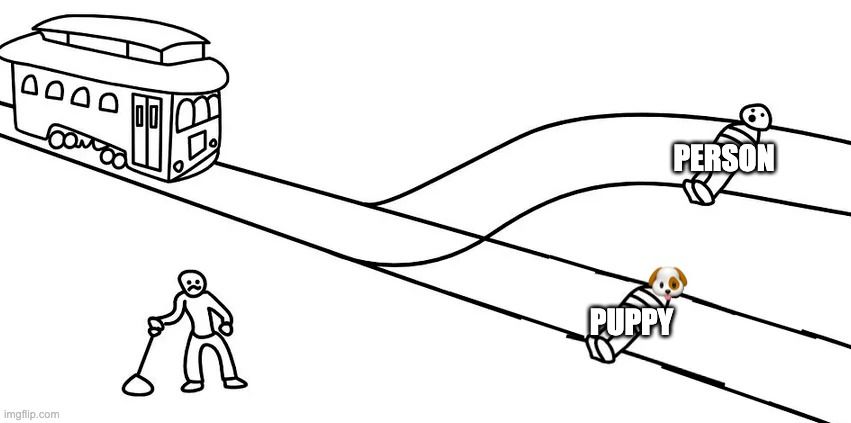
And interestingly, they didn't depend on the political makeup of someone’s network. Even if your close others share your party, denser networks still predicted more openness to opponents.

And interestingly, they didn't depend on the political makeup of someone’s network. Even if your close others share your party, denser networks still predicted more openness to opponents.

Those in denser social networks showed more openness (and indirectly, more warmth) toward political opponents through stronger feelings of unity with close & distant others.

Those in denser social networks showed more openness (and indirectly, more warmth) toward political opponents through stronger feelings of unity with close & distant others.
Your everyday sense of “we’re in this together” may extend to the national level.

Your everyday sense of “we’re in this together” may extend to the national level.
Our new paper in Applied Network Science suggests these two forms of disconnection may be linked. People with denser, more connected social networks often feel less partisan animosity.
🧵


Our new paper in Applied Network Science suggests these two forms of disconnection may be linked. People with denser, more connected social networks often feel less partisan animosity.
🧵
Are our relationships with our fur babies getting in the way of those with people?
New post (🔗 below 👇)

Are our relationships with our fur babies getting in the way of those with people?
New post (🔗 below 👇)
But when love for dogs surpasses love for people, it can come at a cost: less concern for others and deeper social disconnection.

But when love for dogs surpasses love for people, it can come at a cost: less concern for others and deeper social disconnection.
This suggests that seeing dogs as soulmates is widespread. 🐶💞

This suggests that seeing dogs as soulmates is widespread. 🐶💞
US counties with lower birth rates have more pet stores and higher pet industry earnings, even after controlling for population and GDP.

US counties with lower birth rates have more pet stores and higher pet industry earnings, even after controlling for population and GDP.
This link holds even after accounting for inflation, GDP, population, the poverty rate, and median age.

This link holds even after accounting for inflation, GDP, population, the poverty rate, and median age.
Would owners pick a dog’s life over a human’s—even a stranger’s dog?
So we posed moral dilemmas pitting dogs against people 💁⚖️🐶

Would owners pick a dog’s life over a human’s—even a stranger’s dog?
So we posed moral dilemmas pitting dogs against people 💁⚖️🐶
But many go further: preferring dogs over friends, and choosing dog time over people time.

But many go further: preferring dogs over friends, and choosing dog time over people time.
They endorse statements like:
"My dog is my main companion"
"My dog is my main emotional support"
"My dog’s love is purer than most people’s love"

They endorse statements like:
"My dog is my main companion"
"My dog is my main emotional support"
"My dog’s love is purer than most people’s love"
The majority of pet owners see their dog as a soulmate. Many don’t just prefer their own dog over people—they’ll pick a stranger’s dog over a human life.
New preprint 🧵


The majority of pet owners see their dog as a soulmate. Many don’t just prefer their own dog over people—they’ll pick a stranger’s dog over a human life.
New preprint 🧵
In a preregistered study (n=239), an AI described as using a cognitive bottleneck was rated as more transparent, trustworthy, and moral than a baseline end-to-end model.

In a preregistered study (n=239), an AI described as using a cognitive bottleneck was rated as more transparent, trustworthy, and moral than a baseline end-to-end model.
Bottlenecks beat the baseline in nearly every moral framework × LLM pairing.

Bottlenecks beat the baseline in nearly every moral framework × LLM pairing.
Baseline: LLM reads a scenario → outputs a moral score
Bottleneck: LLM reads a scenario → rates features (e.g., harm, intent) → moral score derived from these ratings

Baseline: LLM reads a scenario → outputs a moral score
Bottleneck: LLM reads a scenario → rates features (e.g., harm, intent) → moral score derived from these ratings
Bottlenecks have been used for tasks like bird species identification and tumor detection (Koh et al 2020).
The model 'shows its work' so you can inspect & fix steps as needed.

Bottlenecks have been used for tasks like bird species identification and tumor detection (Koh et al 2020).
The model 'shows its work' so you can inspect & fix steps as needed.
When deciding if something’s a bird, we might check for wings, feathers, and flight.
For morals, we look for cues like harm caused, intent, and victim vulnerability.

When deciding if something’s a bird, we might check for wings, feathers, and flight.
For morals, we look for cues like harm caused, intent, and victim vulnerability.
Cognitive bottlenecks make LLMs more morally aligned with people 🧠🤖
We made AI “think” more like people by narrowing its focus to a few key moral cues.
This AI better predicted people’s moral judgments & was more trusted.
🧵 ⬇️

Cognitive bottlenecks make LLMs more morally aligned with people 🧠🤖
We made AI “think” more like people by narrowing its focus to a few key moral cues.
This AI better predicted people’s moral judgments & was more trusted.
🧵 ⬇️

